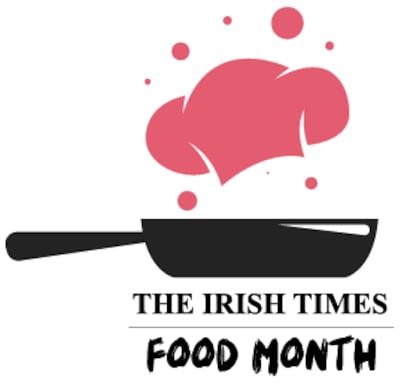Oscar Brophy from Ballyheigue, Co Kerry, has lived in Bratislava, Slovakia since 2016. He is an English teacher and stand-up comedian
If you’re a touch atavistic, then traditional food is our forebears way of telling us that they love us. Every spoonful of chunky Irish stew holds the memories of the tribulations of those that came before. Every cut of carrot is tied to an eviction, each potato a crying mother watching her children leave on a coffin ship. A wail through time into our ignorant stomachs. One can only imagine the horrors the 3-in -1 will be metaphysically tied to for future generations.

Much in the same way,the traditional food of my home-away-from-home tells the story of Slovakia. Much like Ireland, Slovakia's fate was decided for it by its more powerful neighbours for centuries. Poland lies to the north, Ukraine to the east, Hungary to the south, Austria to the southwest and the Czech Republic to the northwest. Slovakia only became an independent state on January 1st, 1993 after the peaceful dissolution of Czechoslovakia, sometimes known as the Velvet Divorce. So purely Slovak culinary traditions are limited. Much like Ireland's more regional spins on what are essentially British dishes (for example, the Full Irish vs the Full English or Shepherd's Pie), Slovakia has a tendency to do likewise. We can liken any similarities its food has with dishes from other nations to it to picking up habits from its abusive foster parents.
An unholy Trinity
Like others have done with Irish dishes, I’m going to sketch out what three popular dishes in Slovakia can tell us about the social and economic history of this region.
Food good enough for a shepherd
Hark! Along the cliffs, a solemn shepherd walked back to his homestead. The sheep were moved to the new pen, the sun was on its way down. He had not eaten since that morning’s feed of thick bread, sheep cheese and onion. He removed his leather boots and hung up his Valaška (a shepherd’s axe). As he stepped into the firelit one-room shack, his wife told him that the local Hungarian count had sent his bailiffs over to hassle them about unpaid rents. In her rusty Hungarian she said they would have it in a week’s time. He threatened her and the homestead with violence. Janoš cursed the bailiff. He pulled out his chair and sat down to a plate of creamy potato dumplings swimming in sheep’s cheese, topped with greasy chunks of fried pork belly. Yes, bryndzove halušky tended to melt away life’s troubles. His thoughts drifted to the plan for the week’s shepherding. Summer was ending.
Mince the Slovak way
Meanwhile, miles away back in town, the bailiff was sitting down to dinner as well. Sitting in his austere candle lit dining room, he made small talk with his wife about the day’s collections (or lack thereof) and cursed what he saw as the simple minded Slovak sheep men. They couldn’t even speak Hungarian, for god’s sake! His meal was a touch more intricate. He was looking at a plate of what in the parlance of the future, unknown to him, could be described as cabbage lasagne. This was Cabbage from Cluj or Kapusta Koložvarska in Slovak. A speciality from the bailiff’s native Transylvania, on the eastern edge of the Hungarian realm. The capital of this region, Kolozvar (today Cluj, Romania) had birthed this beauty of layered mince meat and cabbage, topped with cream.

Schnitzel nights
Many more miles away still, in the regional capital, a lonely Austrian sits wondering who he had angered to be sent such lengths away from his home. There was not much glory or riches to be found in the mountains of Upper Hungary. He sat next to his oil lamp scribbling in his ledger while his servant hammered away at veal chops in the other room, flattening the meat before it was breaded, fried and served with a side of mashed potatoes and a garnish of juice from a lemon. At least the schnitzel will remind the administrator of his mutti back in Innsbruck.
The Slovak 3-in-1
And thus we can see through three dishes the reflection of the social order of a long-dead empire. The relatively straightforward dishes are the work of the farming classes and the more complex or expensive stuff flows down from the foreign nobility and gentry. Though today, if you asked a Slovak person where Kapusta Koložvarska came from, most of them won’t be able to tell you. In fact, they would probably tell you it is disgusting.
Though today a lot of traditional food is more Slavic in character (massive mounds of pork and the carp served for Christmas dinner after being held prisoner in the bathtub), there are ongoing attempts to modernise old classics.
A Hungarian import, Langos, is a popular street food around Central Europe. It is deep fried dough, topped usually with sour cream, garlic and cheese. It is like a pizza in the same way that Cabbage from Cluj is like lasagne. Aping the Italians is a recurring theme in Hungarian food. In central Bratislava, certain kiosks are disrupting the langos market. By topping it with pastrami or cacio e pepe, they are further Italianizing it, yet Slovakishly. Perhaps next on the menu is goulash on spaghetti.
You can follow Oscar Brophy on Instagram and Twitter (@brophyst) and read his previous Irish Times Abroad article here
If you live overseas and would like to share your experience with Irish Times Abroad, email abroad@irishtimes.com with a little information about you and what you do











